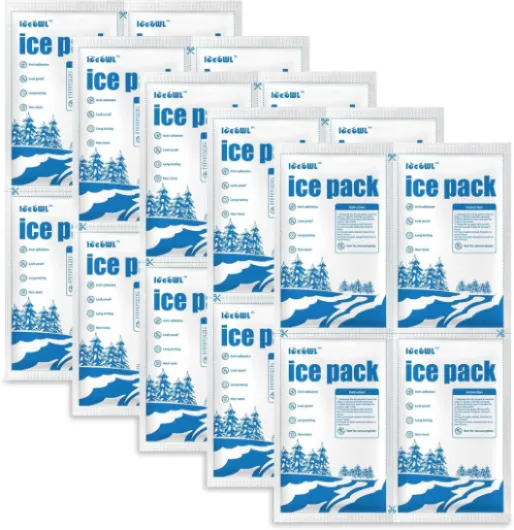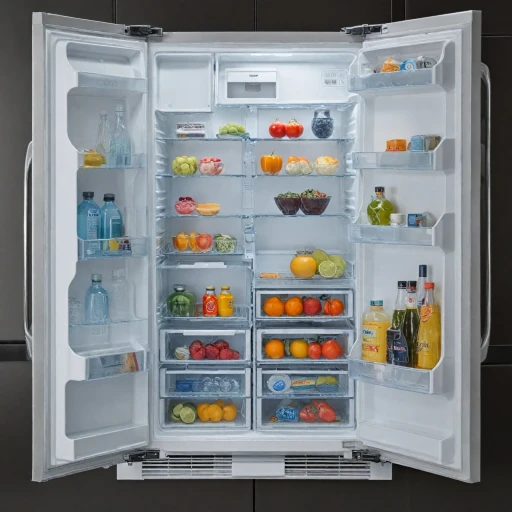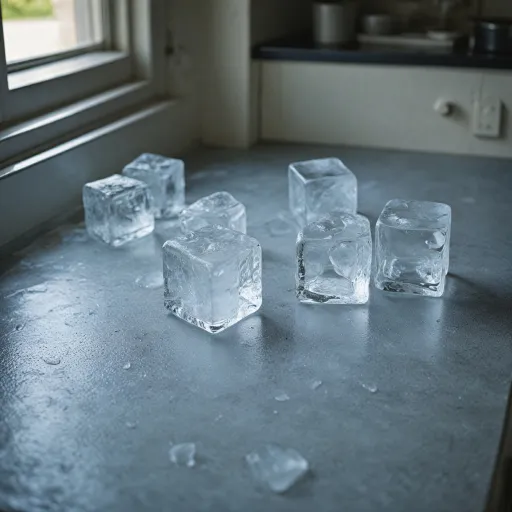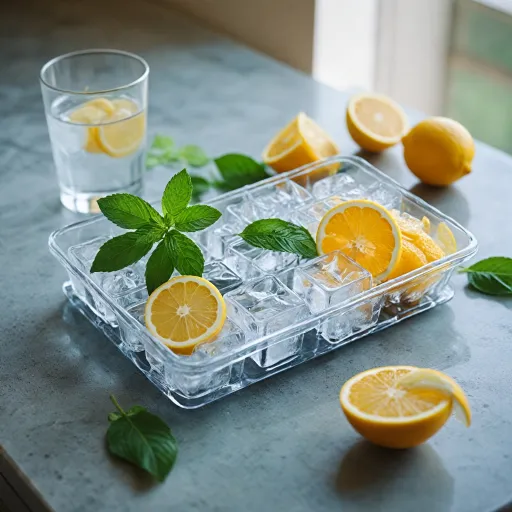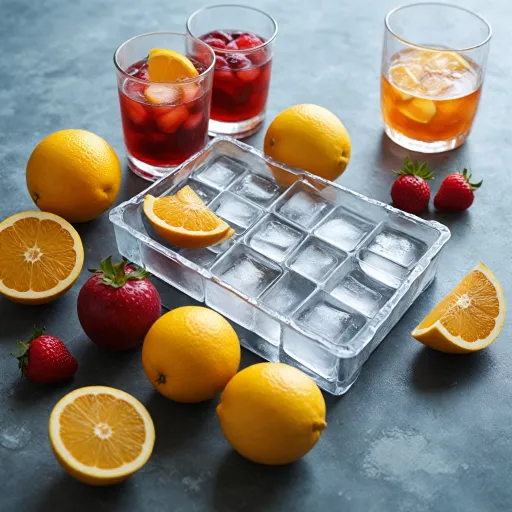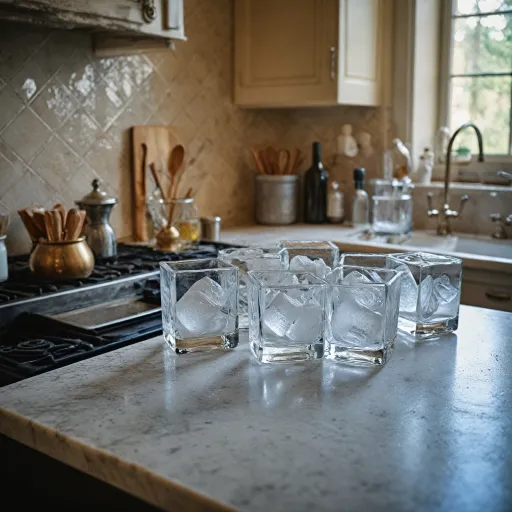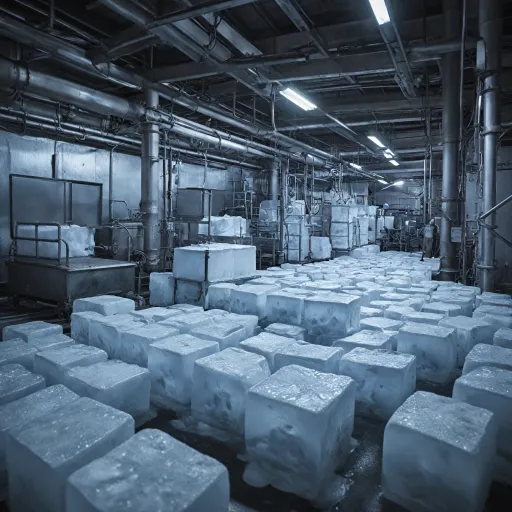
Understanding dry ice and its benefits in coolers
What Makes Dry Ice Different from Regular Ice?
Dry ice is not your typical ice. Unlike regular ice, which is simply frozen water, dry ice is the solid form of carbon dioxide. This means it doesn’t melt into a liquid but instead turns directly into a gas—a process called sublimation. Because of this, there’s no wet mess left behind in your cooler, making it a popular choice for keeping items frozen or cold for longer periods.
Why Use Dry Ice in Your Cooler?
One of the biggest benefits of using dry ice in coolers is its extremely low temperature. Dry ice is much colder than regular ice, sitting at about -109°F (-78°C). This intense cold can keep meat, ice cream, and other frozen goods solid for days, even in warm conditions. If you need to keep your cooler cold for an extended period, dry ice will outperform regular ice blocks or ice jugs every time.
- Longer-lasting cold: Dry ice keeps your cooler cold for more days compared to wet ice.
- No water mess: Since dry ice doesn’t melt into water, your food stays dry and there’s no soggy bottom cooler to clean up.
- Freezing capability: Dry ice can freeze items that regular ice will only keep cold, making it ideal for transporting frozen meat or ice cream.
Choosing the Right Type of Ice for Your Needs
While dry ice is excellent for keeping things frozen, it’s not always the best choice for every situation. For example, if you only need to keep drinks cool, regular ice or ice blocks might be more practical. However, if you want to keep items frozen or need ice to last longer, dry ice is a good option. For those interested in making perfect blocks of ice for their cooler, check out this guide to perfect blocks of ice.
Understanding these differences will help you decide when to use dry ice, regular ice, or a combination of both to keep your cooler at the right temperature for your needs.
Safety precautions when handling dry ice
Handling Dry Ice Safely in Your Cooler
Dry ice is much colder than regular ice, reaching temperatures around -78°C (-109°F). This extreme cold is what makes dry ice so effective for keeping your cooler contents frozen for days. However, it also means you need to be extra careful when handling it. Here are key safety steps to follow:
- Wear protective gloves: Direct contact with dry ice can cause severe frostbite. Always use thick, insulated gloves when moving or breaking dry ice blocks.
- Use in well-ventilated areas: Dry ice is solid carbon dioxide. As it sublimates, it turns into gas, which can displace oxygen in enclosed spaces. Never use dry ice in a sealed room or vehicle.
- Avoid airtight containers: Never store dry ice in a completely sealed cooler or container. As dry ice turns into gas, pressure can build up and cause the container to burst. Leave the cooler lid slightly ajar or use a vented cooler.
- Keep away from children and pets: Dry ice is not safe to touch or ingest. Store it out of reach and inform others about the risks.
- Do not eat or drink directly from the cooler: Food and drinks can become extremely cold or even freeze solid. Let items warm up slightly before consuming to avoid injury.
Following these precautions will help you enjoy the benefits of dry ice in your cooler without risk. For more on maximizing your ice efficiency, check out this guide on maximizing efficiency with bulk ice production.
Remember, dry ice is a powerful tool for keeping your cooler cold longer, but safety comes first. Proper handling ensures your ice, meat, and other items stay frozen and your cooler experience remains safe and effective.
Preparing your cooler for dry ice
Getting Your Cooler Ready for Dry Ice
Before you add dry ice to your cooler, it’s important to prepare it properly. This ensures maximum cooling and keeps your food and drinks frozen or cold for as long as possible. Dry ice is much colder than regular ice, so a little preparation goes a long way in keeping your cooler efficient and safe.
- Choose the right cooler: Not all coolers are made to handle dry ice. Use a hard-sided cooler, as soft-sided coolers may get damaged by the extreme cold. Make sure your cooler is well-insulated to keep the dry ice solid for longer.
- Pre-chill your cooler: If possible, cool your empty cooler with regular ice or frozen water jugs for a few hours before adding dry ice. This helps maintain a lower starting temperature, so your dry ice lasts longer and keeps everything colder.
- Protect the inside: Dry ice can crack plastic if it comes into direct contact with the bottom of your cooler. Place a layer of cardboard, a towel, or a few layers of newspaper at the bottom cooler to prevent damage and reduce the risk of freezing anything that touches the dry ice directly.
- Separate dry ice from food: If you’re storing items like meat or ice cream, consider using a barrier between the dry ice and your food. This helps avoid freezing items that should just stay cold, not frozen solid. For best results, keep dry ice blocks at the bottom and regular ice or frozen gel packs on top of your food.
- Ventilation is key: Since dry ice is solid carbon dioxide, it will turn into gas as it melts. Make sure your cooler lid is not completely airtight to allow the gas to escape safely. Never seal your cooler completely when using dry ice.
Taking these steps will help you keep your cooler dry, your ice longer, and your food at the right temperature. If you want to learn more about making perfectly clear ice cubes at home, check out our detailed guide for more tips on ice quality.
How to pack dry ice in a cooler effectively
Arranging Dry Ice for Maximum Cooling
When packing dry ice in your cooler, the way you arrange it makes a big difference in how long your items stay cold or frozen. Dry ice is much colder than regular ice, so it can keep your cooler at freezing temperatures for days if used correctly. Here’s how to get the most out of your dry ice:- Place dry ice at the bottom of the cooler. Cold air sinks, so putting blocks of dry ice at the bottom cooler area will help keep everything above it colder for longer. If you want to keep meat or ice cream frozen, place them directly on top of the dry ice blocks.
- Layer with regular ice or frozen water jugs. For best results, add a layer of regular ice or frozen water jugs above the dry ice. This helps maintain a steady cold temperature and slows down the melting of regular ice, keeping your cooler dry and reducing water buildup.
- Separate items with cardboard or towels. To avoid direct contact between dry ice and food, use a layer of cardboard or a towel. This prevents freezing damage to items that don’t need to be rock solid, while still keeping everything cold.
- Fill empty spaces. Air pockets can cause dry ice to sublimate faster. Fill gaps with extra ice, towels, or even more frozen items to keep the cold air trapped inside the cooler.
- Keep the cooler closed as much as possible. Every time you open the lid, warm air enters and cold air escapes, causing the dry ice to sublimate and regular ice to melt faster. Plan ahead and only open the cooler when necessary.
Tips for maintaining temperature and prolonging cooling
Keeping Your Cooler Cold for Longer
To get the most out of your dry ice in a cooler, you need to focus on maintaining low temperatures and slowing down the sublimation process. Here are some practical tips to help you keep your ice, food, and drinks cold or even frozen for days:- Limit Opening the Cooler: Every time you open the lid, warm air enters and cold air escapes. Try to plan ahead and only open your cooler when necessary. This helps keep the inside temperature stable and prevents the dry ice from sublimating too quickly.
- Use Ice Blocks and Jugs: Combining dry ice with regular ice blocks or frozen water jugs can help maintain a consistent cold environment. The dry ice will keep the regular ice frozen longer, and the blocks will slow down the melting process compared to loose ice cubes.
- Layering Matters: Place dry ice on the top of your cooler contents. Cold air sinks, so this setup allows the carbon dioxide from the dry ice to flow downward, keeping everything below colder. If you want to keep meat or ice cream frozen, position them directly under the dry ice blocks.
- Separate Wet and Dry Items: Dry ice does not melt into water like regular ice. However, as regular ice melts, it creates water at the bottom of the cooler. Use a rack or tray to keep food and dry items above the water line, preventing sogginess.
- Pre-Chill Your Cooler: Before adding dry ice, pre-chill your cooler with regular ice or frozen water bottles. This will lower the internal temperature and help the dry ice last longer once you pack it in.
- Insulate the Cooler: For longer trips, wrap the cooler in blankets or towels. This extra insulation will help keep the cold in and the heat out, making your dry ice last longer.
| Item | Placement | Effect |
|---|---|---|
| Dry Ice Blocks | Top of cooler | Keeps contents below colder, will freeze items directly underneath |
| Regular Ice | Bottom or around sides | Stays frozen longer with dry ice, adds cold water for drinks |
| Frozen Water Jugs | Bottom or sides | Slows melting, keeps cooler dry, reusable |
Disposal and cleaning after using dry ice
Cleaning Up After Using Dry Ice
Once your cooler has done its job keeping everything frozen with dry ice, it’s important to handle cleanup carefully. Dry ice is solid carbon dioxide, and as it sublimates, it leaves no liquid behind—unlike regular ice, which melts into water. However, there are still a few steps to make sure your cooler stays in top shape for your next trip.- Ventilate the Area: Always open your cooler in a well-ventilated space. Any leftover carbon dioxide gas from the dry ice can build up inside the cooler. Let it air out for a few minutes before reaching in.
- Check for Residue: Dry ice itself won’t leave a wet mess, but condensation can form on the inside of your cooler, especially if you used regular ice blocks or jugs alongside the dry ice. Wipe down any moisture to prevent mold or odors.
- Inspect for Damage: Extremely cold temperatures from dry ice can sometimes make plastic brittle. Look for any cracks or warping, especially at the bottom of the cooler where the ice blocks were placed.
- Dispose of Leftover Dry Ice Safely: If you still have solid dry ice left, let it sublimate in a safe, open area—never in a closed room or vehicle. Never put dry ice in the sink, toilet, or trash compactor, as freezing temperatures can damage plumbing and surfaces.
- Wash Thoroughly: Use warm, soapy water to clean the inside of your cooler. This helps remove any residue from food, drinks, or meat that may have come into contact with the ice or cooler walls. Rinse and dry completely before storing.
-logo-retina.jpg)

